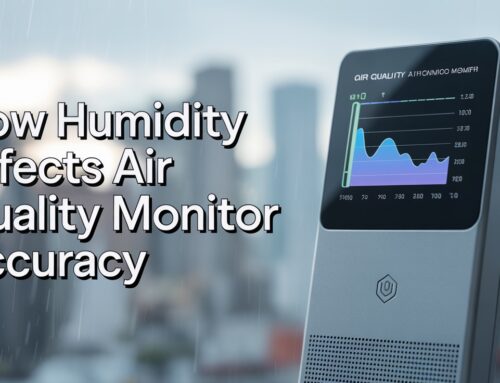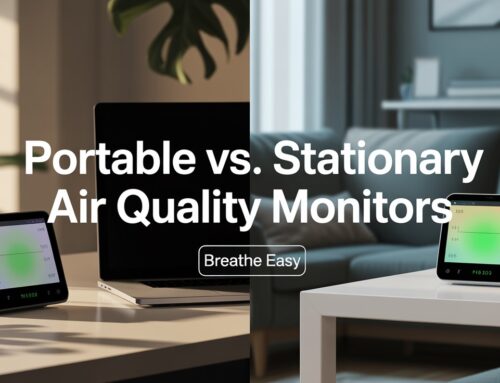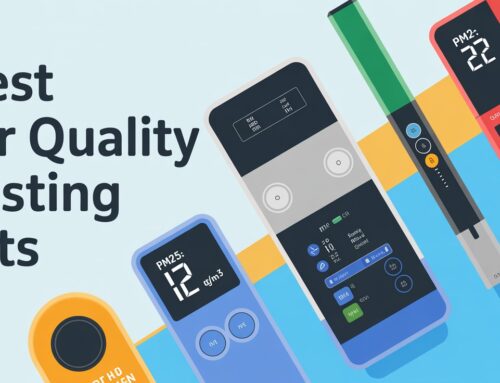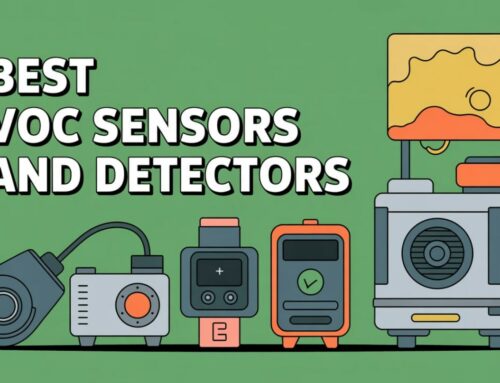June 17, 2025
Different Types of Air Quality Samplers: What You Need to Know
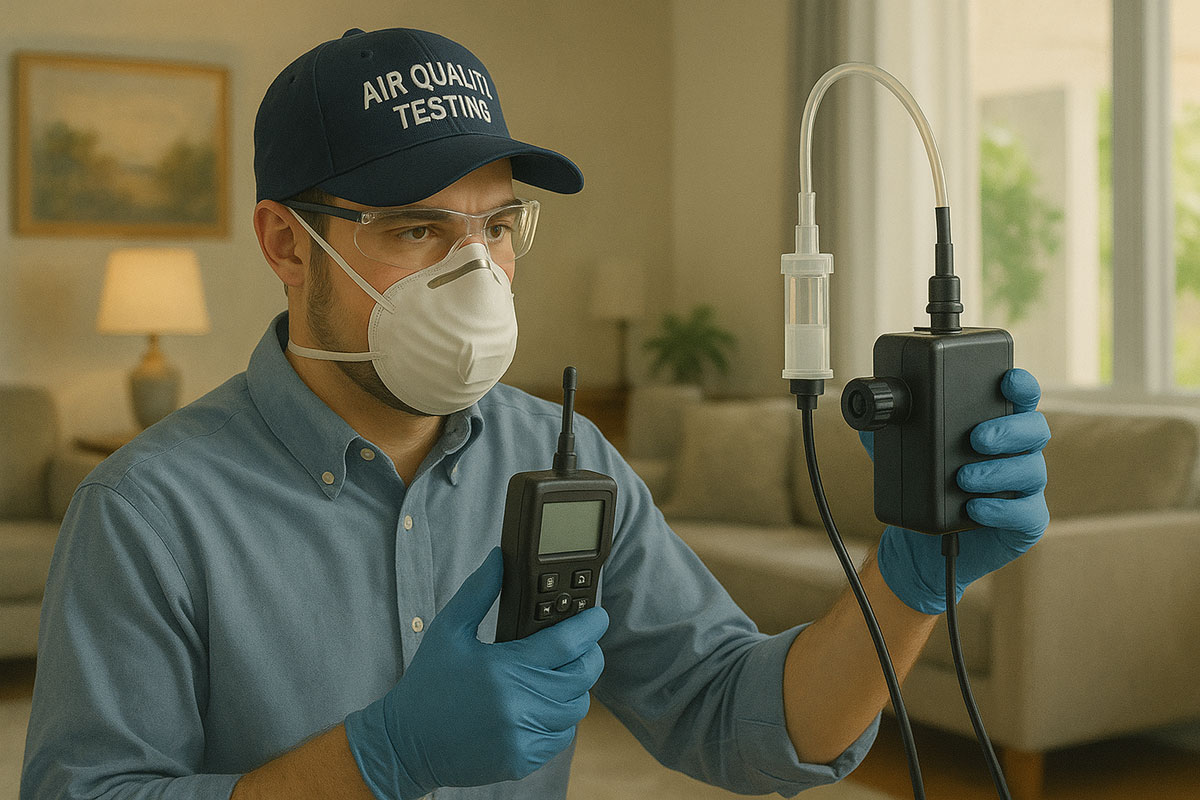
Different Types of Air Quality Samplers: What You Need to Know
Air quality plays a major role in the health and comfort of building occupants. Whether you’re a homeowner in Gatineau, a facility manager in Ottawa, or a real estate agent in Kingston, understanding how indoor air is tested can help you make better decisions. At Air Quality Testing Canada, we use a wide range of professional-grade sampling tools to deliver accurate, certified results across Ontario and Quebec.
This guide explains the different types of air quality samplers, how they work, and when each type is used — helping clients across residential, commercial, and institutional sectors get clear answers about their air.
| Sampler Type | Sampling Method | Used For | Duration | Common Use Cases |
|---|---|---|---|---|
| Filter Sampler | Active | PM2.5, mold spores, asbestos | 15 min – 8 hours | Home inspections, asbestos/mold testing |
| Sorbent Tube | Active | VOCs, chemical vapors | 30 min – 2 hours | Residential and commercial VOC analysis |
| Canister Sampler | Passive or Active | Whole-air VOCs | 1 hour – 24 hours | Odor complaints, formaldehyde detection |
| Impingers/Imactors | Active | Biological contaminants | 15 min – 1 hour | Healthcare, schools, microbial testing |
| Personal Sampler | Active | Worker exposure | Up to 8 hours | Occupational health assessments |
| Diffusion Badge | Passive | Long-term VOCs | 8 hours – 7 days | Background monitoring, workplace air |
| TEOM/Real-Time Monitor | Active | Continuous PM levels | Real-time | Industrial sites, regulatory tracking |
What Are Air Quality Samplers?
Air quality samplers are tools used to collect air samples for analysis. These samples can be tested for pollutants such as:
Different testing situations require different samplers. Choosing the right one depends on what’s being tested, how long the sampling will occur, and where the test is being performed.
Active vs Passive Sampling
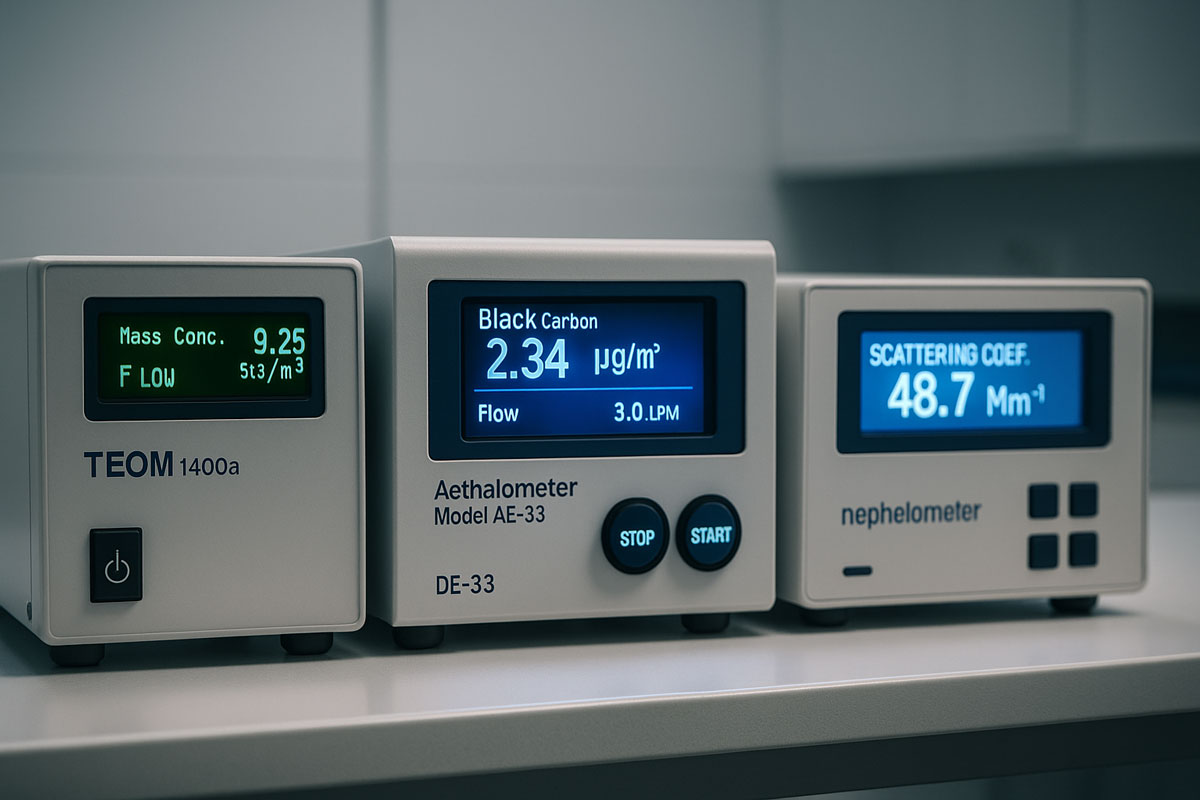
Active Samplers
Active samplers pull air through a sampling device using a pump. They’re highly accurate and are often used for time-sensitive or short-term testing. At Air Quality Testing, our certified inspectors use active methods for:
-
Detecting VOCs using sorbent tubes
-
Collecting particles like asbestos fibers or mold spores
-
Real-time readings with direct-reading monitors
Passive Samplers
These devices don’t use a pump. Instead, they rely on diffusion — pollutants slowly move through a medium over time. Passive samplers are often used in long-term monitoring and are ideal in spaces where power or active equipment isn’t practical.
We may use passive badge-type samplers in situations like workplace monitoring or extended background testing.
Continuous vs Non-Continuous Sampling
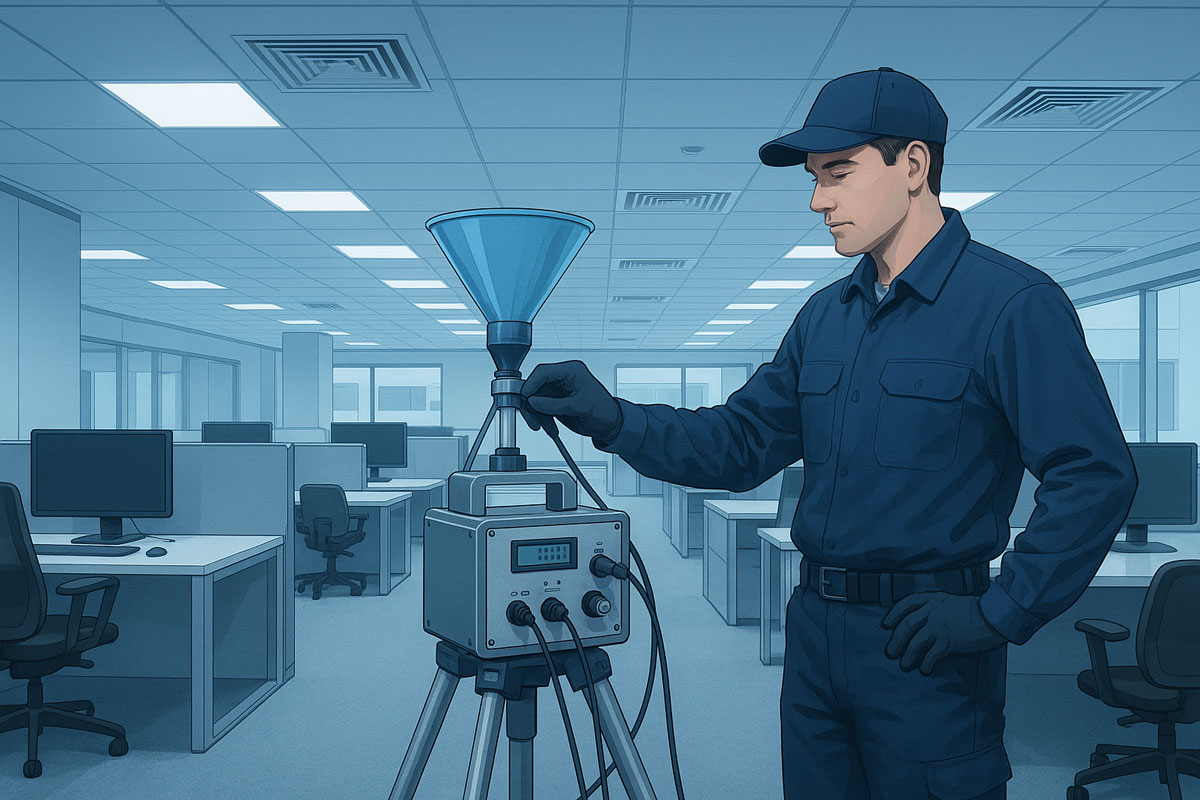
Continuous Sampling
Used for real-time monitoring, these devices run constantly and provide up-to-the-minute data. Tools such as nephelometers and TEOMs (Tapered Element Oscillating Microbalance) fall into this category. These are particularly useful for high-risk environments or where detailed trend data is required.
Non-Continuous (Grab Sampling)
Grab samplers collect a single sample at a specific moment. These are helpful in routine home inspections or post-renovation checks where a snapshot is needed.
Common Types of Air Quality Samplers We Use
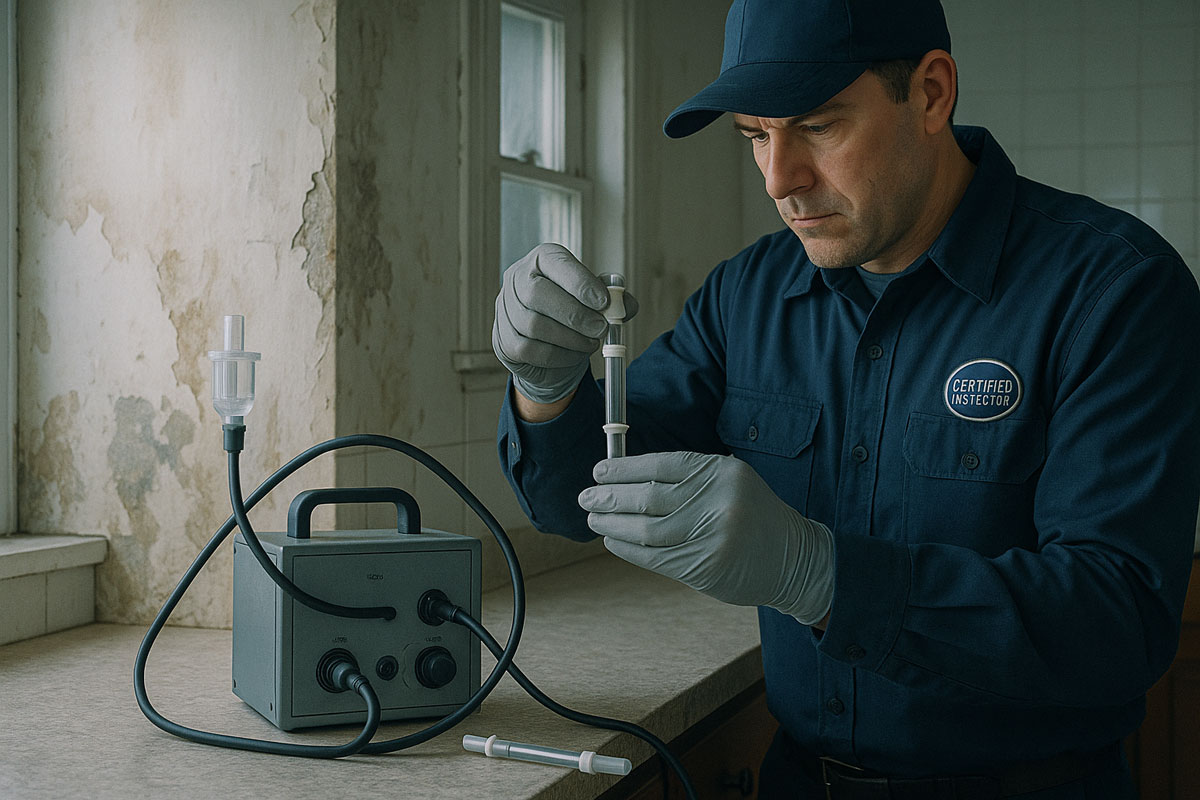
1. Filter Samplers
Used for particles like mold, asbestos, and dust. Air is drawn through a filter which captures contaminants for lab analysis. This method is part of nearly every mold and asbestos inspection we conduct.
2. Sorbent Tubes
Target gases and vapors such as VOCs. The tubes are sent to a lab for analysis by gas chromatography. Frequently used in commercial and residential VOC assessments.
3. Canisters
Used to collect whole air samples, often for complex VOC profiles. Ideal in homes with persistent odors or commercial spaces where solvent use is suspected.
4. Impingers and Impactors
Used in microbiological air testing. They collect biological particles like bacteria and fungi into a liquid or onto an agar plate. These tools are valuable for public institutions and sensitive environments such as clinics or schools.
5. Personal Exposure Monitors
Portable devices worn by individuals, often used in occupational settings to assess direct exposure over a work shift. Our commercial clients benefit from this approach when evaluating workplace air quality compliance.
Why Choosing the Right Sampler Matters
The type of sampler used directly affects the quality and reliability of results. At Air Quality Testing, our team—certified by IICRC and IAQA, and other leading organizations—matches each test with the correct sampling method to:
-
Accurately detect specific contaminants
Real-World Example
A recent inspection in Montreal involved complaints of strong odors and dizziness. Our team used a combination of sorbent tubes for VOCs and a grab sample canister for complex gas analysis. The test revealed high levels of formaldehyde from improperly sealed construction materials—information that helped the client resolve the issue quickly.
Beyond the Basics: Advanced Monitoring Tools
In certain projects, we deploy specialized tools such as:
- Nephelometers: For monitoring airborne particles using light scattering
- Aethalometers: Detecting black carbon in commercial or industrial settings
- Direct-reading instruments: For instant field readings, useful in urgent cases
These tools allow us to go deeper when standard methods aren’t enough.
Filling the Gaps in Air Quality Knowledge
Unlike many sources that list tools without context, we focus on how these tools are used in real environments—homes, workplaces, schools. We also provide:
-
Clear health and safety interpretations
Frequently Asked Questions
1. What is the average duration required for Air Quality Testing to complete sampling using different air quality samplers?
The average duration for Air Quality Testing to complete sampling varies from 30 minutes to 8 hours depending on the type of sampler and pollutant targeted. Active samplers typically collect data over short periods, while passive samplers may require extended time frames to capture reliable results.
2. Can Air Quality Testing use different air quality samplers simultaneously during one inspection?
Yes, Air Quality Testing can use multiple air quality samplers simultaneously during a single inspection to capture a broader range of contaminants. For example, mold, VOCs, and particulate matter may each require different sampling methods conducted at the same time for efficiency and accuracy.
3. How does Air Quality Testing determine which air quality sampler is best for a specific residential property?
Air Quality Testing determines the most suitable air quality sampler based on factors such as suspected pollutants, building age, recent renovations, and occupant health concerns. The selection is informed by a pre-inspection consultation and the company’s certified expertise in indoor environmental quality.
4. Are there any seasonal considerations that affect the performance of air quality samplers used by Air Quality Testing?
Yes, seasonal changes can affect the performance of air quality samplers used by Air Quality Testing, particularly in how pollutants behave indoors. For example, VOCs may be more concentrated in winter due to closed windows, while higher humidity in summer can increase mold activity.
5. Does Air Quality Testing offer air quality sampler options that provide real-time readings during inspections?
Yes, Air Quality Testing offers air quality samplers equipped with direct-reading instruments that provide real-time data during inspections. These tools are especially useful for commercial environments or when immediate decisions are needed based on preliminary results.
Ready to Book Air Quality Testing?
Whether you’re in Ottawa, Cornwall, Belleville, or anywhere in between, Air Quality Testing offers reliable assessments tailored to your needs. We take the stress out of the process, delivering trusted results with unmatched customer service.
📞 1-866-528-2897
🌐 AirQualityTesting.ca
🕗 Monday to Friday, 8:00 AM – 3:00 PM
Final Thoughts
Knowing the different types of air quality samplers can help you understand what goes into a professional inspection. At Air Quality Testing, our job is to deliver results you can rely on—whether you’re protecting your family, your employees, or your reputation.


